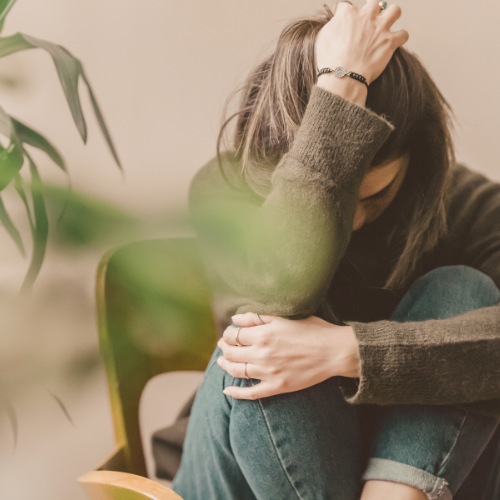Anxiety Is Normal.
Originally anxiety was meant to protect our ancestors from dangers that threatened their existence, such as wild animals. Even though we now live in world with so many more comforts and choices than our ancestors had, the purpose of our anxiety remains the same as it always has been; to protect us from danger. While danger can still of course take the form of acute threats to our physical well-being, many people nowadays feel anxious in more nuanced ways. Feeling unwanted, unsuccessful, or flawed in some way are common examples of things people feel anxious about in modern times. These things, rather than being about physical threats, are about values that we identify as important to our existence being threatened. As you can imagine, threats to values are resolved differently than being safe from wild animals.
Productive Anxiety vs. Excessive Anxiety
Regardless of the nature of the danger being a threat to physical well-being or to one’s values, productive anxiety results in solutions and excessive anxiety results in problems.
When anxiety is proportionate to a threat and results in actions that resolve that threat it would be considered productive. When anxiety reaches a level where you begin to feel helpless and overwhelmed, and results in actions that may temporarily relieve anxiety but do not resolve the threat, it is excessive, and not productive.
Excessive anxiety can take a variety of forms you may have heard about such as generalized anxiety disorder, social anxiety disorder, post-traumatic stress disorder, phobias, panic disorder, and obsessive-compulsive disorder.
The Three Parts of Anxiety
While the specifics of each anxiety disorder vary, they all involve some degree of:
- Physical discomfort (feeling tense)
- Cognitive distress (worry)
- Avoidance behavior (steering clear from the things you are anxious about)
The combined effect of physical discomfort, cognitive distress, and avoidance behavior get in the way of succeeding in important areas of your life such as relationships, work, school, and even recreation. While avoidance behavior seems to help in the short term it only makes the problem worse in the long term.
How Therapy Can Help You Manage Anxiety
As noted above, anxiety has three parts which we will address together in therapy.
In therapy for your anxiety we will look at the ways you are treating yourself physically and will seek to make adjustments as needed in this area. Learning ways to relax physically can be an important piece of anxiety treatment. Exercise, meditation, being mindful of substance use, and even considering a referral to a psychiatrist to discuss the potential benefits of psychotropic medications can all help address the physical piece of anxiety.
How you think is another piece we will be looking at together in therapy. Are you a perfectionist? Do you have little tolerance for uncertainty? Do you always think of the worst case scenario? Do you overthink most things? It can be incredibly relieving to learn new ways of looking at the issues that once led to your excessive anxiety.
Looking at the ways you act is also important when it comes to anxiety treatment. As mentioned above, excessive anxiety involves an avoidance piece which provides some form of immediate relief but fails to address the actual problem. Your anxiety has probably affected your choices in a number of ways. While it can be painful to take inventory on this topic, it can also be liberating and inspiring to start living in more expanded ways. The more you are able to face what makes you anxious, even though it may be uncomfortable at times, the less anxious you are able to become! It is a little counterintuitive, but when you see it working you will feel inspired to continue with your efforts.
Therapy can help you address the ways anxiety has been negatively impacting your life and help you get reconnected to the things that are most important to you!

